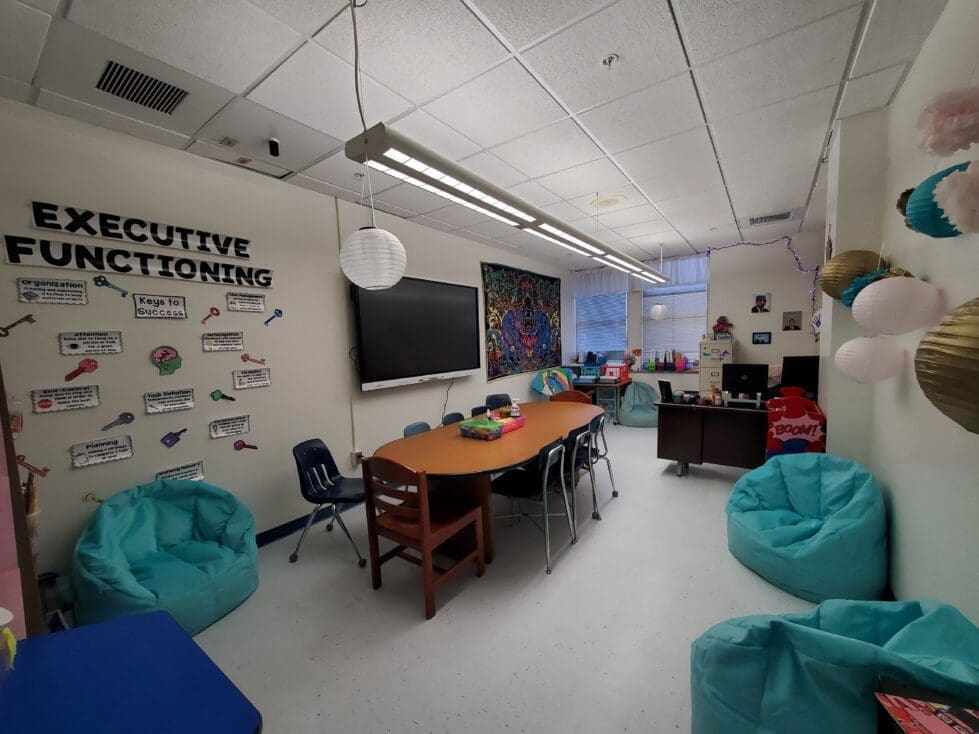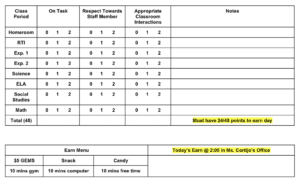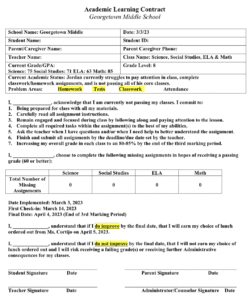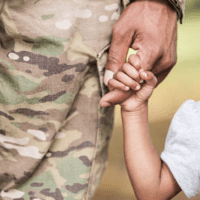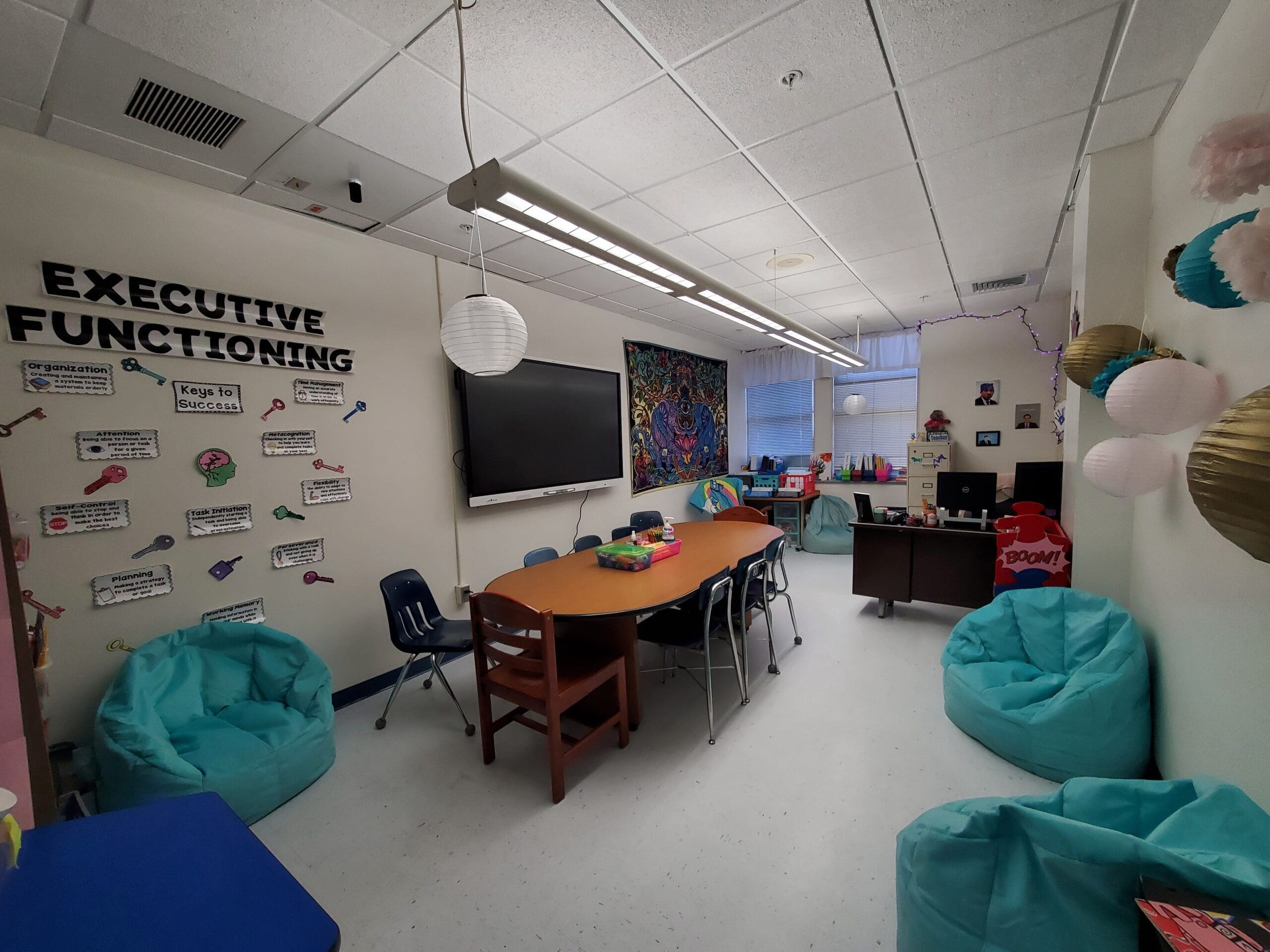

Georgetown Middle’s intervention program has helped hundreds of students since being created three years ago.
Jessica Mariner can see how her seventh-grade son Karson has made academic and behavioral strides in the two months he’s been participating in Georgetown Middle School’s intervention program.
“He used to give up right away and call himself dumb, and I would never know if he had homework unless I asked him,” Mariner said. “He flourishes off of positive reinforcement, and he now comes home with a mission to complete his homework every night.”
The Indian River School District started its Behavior Tiered Intervention Support three years ago. At the start of the 2021-22 school year, it opened a student success suite for the kids who were in the program.
Georgetown Middle School Principal David Hudson said it took about a year for teachers and students to buy into the program run by Tabitha Cortijo.
She already has worked with 193 students this year, up a few students from the previous year.
“My favorite part of this job is relationship building, which is the biggest part of these interventions,” Cortijo said. “A lot of the students I work with have trust issues, and they have certain behaviors because they’re not able to maybe talk about things or work on it themselves, or they just haven’t had a trusting adult to help them.”
Mariner, a single mother, said her son never had a male role model.
Karson also has a learning disability that can’t be treated because all the medications for it cause his blood pressure to rise, his mom said.
“He’s pretty great socially but he sometimes struggles academically and he gets frustrated easily and shuts down quickly and stops believing in himself,” Mariner said.
In January, at Karson’s individualized education program meeting, which outlines how the school will try to help Karson achieve his goals, Mariner decided it was time to have her son join the intervention program.
Karson refused to go to his first intervention meeting, but after talking to Cortijo, something clicked, Mariner said.
Now her son looks forward to filling out his scorecard and achieving his intervention goals.
“Miss C’s energy and attitude is so uplifting to the students and what she has to offer is rewarding for not just my son but other kids,” Mariner said. “It keeps them motivated, and as a parent who’s not with him for seven hours a day, that’s so important.”
Every day, Cortijo meets with about 15 students, either individually or in group settings.
These students are a mix of special needs students and traditional students, and most of them are referred to the intervention program by a teacher who notices they are struggling or falling behind.
“We’ll have a team meeting and talk about what the teachers are seeing, what issues they’re seeing,” Cortijo said. “Then we decide from there what’s the most important thing that we want to focus on, and then I would provide those interventions.”
Cortijo created a point card that is used to track progress.
One student this week, for example, had goals of being prepared for class and staying on task with their in-class work.
Students earn points throughout the day in each one of their classes, as their teacher marks their scorecard.
“If they didn’t earn all their points, we ask them what happened in those classes,” Cortijo said. “We would have a conversation of how and what we could do differently, or how things are working, depending on their daily scores.”
A student earns points for rewards such as candy, toys, computer time, gym time and more.
The student, a parent and Cortijo sign a behavior contract so everyone is on the same page of what the student needs to work on.
The contract lists their goals for grades, missing assignments, and responsibilities of the student.
- A sample scorecard for the intervention program.
- A sample contract for the intervention program.
Most students stay in the program for about six weeks.
“Some students choose to stay in the program even if they don’t need it anymore because the interventions are working so well for them,” Cortijo said.
Cortijo tries to have a 10-minute meeting with all of her students once a week, and she regularly pops into classrooms to observe a student’s behavior.
She also divides her students into groups, with each group focusing on a different objective each week.
“Right now one group is focusing on organizational skills, and another group is working on self control,” Cortijo said. “We talk about strategies and tools to use in the classroom, in and out of the classroom, to work on those behaviors.”
Some strategies she works through with students focus on helping self control, perhaps keeping their hands to themselves, taking quick mental breaks in the hallway or suite, or counting to a number before reacting to something they may not like.
Cortijo is also a cafeteria aide and spends a lot of her time socializing with the students.
“I try to involve myself in anything that’s happening in the school so that the students see my face and know who I am and feel comfortable with me,” she said.
Since she has a degree in middle school science and English, she’ll also provide some extra tutoring when needed.
A lot of students now hang out in the student success suite who aren’t part of the intervention program just because the room is a comfortable and safe setting, Cortijo said.
It features several giant bean bags that the kids can sit on to decompress and students often go to the suite to complete work, finish tests or, most commonly, just to hang out with Cortijo.
Karson didn’t feel like talking about being in the program, but his mom says she wants to encourage other families to try it.
“If you’re a parent with a struggling daughter or son, do not wait,” Mariner said. “Everything that has come out of this intervention program has been positive for Karson.”


Raised in Doylestown, Pennsylvania, Jarek earned a B.A. in journalism and a B.A. in political science from Temple University in 2021. After running CNN’s Michael Smerconish’s YouTube channel, Jarek became a reporter for the Bucks County Herald before joining Delaware LIVE News.
Jarek can be reached by email at [email protected] or by phone at (215) 450-9982. Follow him on Twitter @jarekrutz and on LinkedIn
Share this Post

